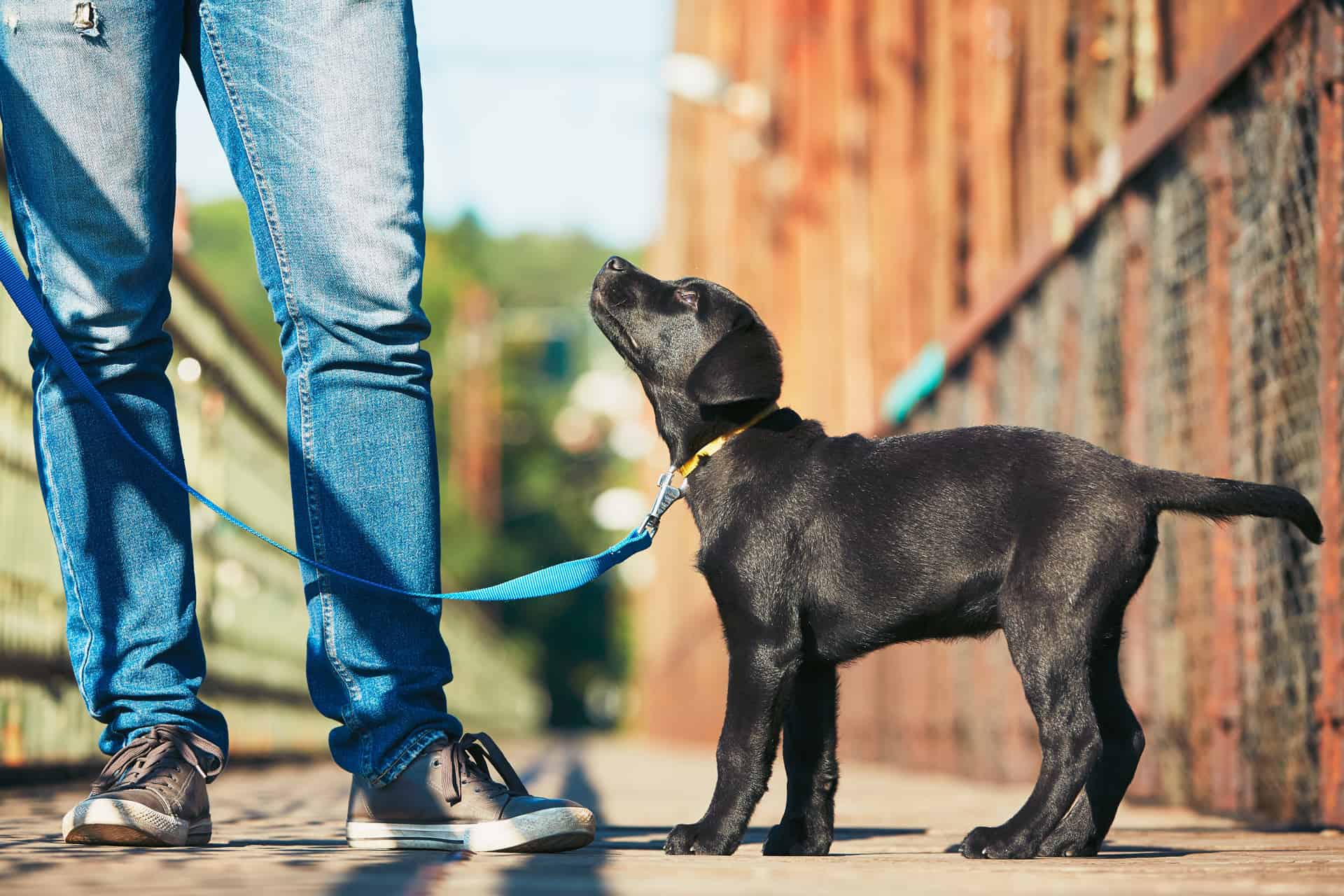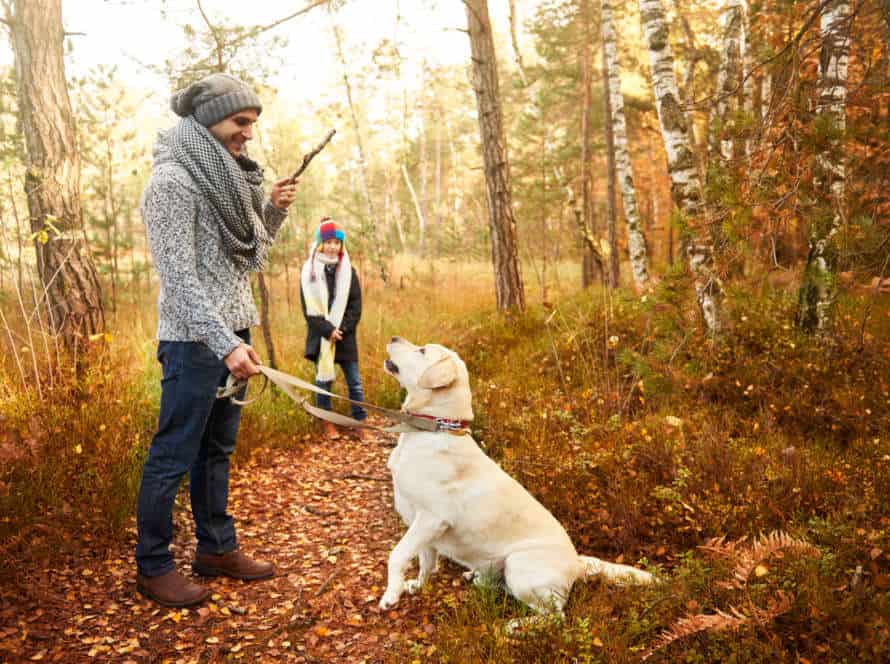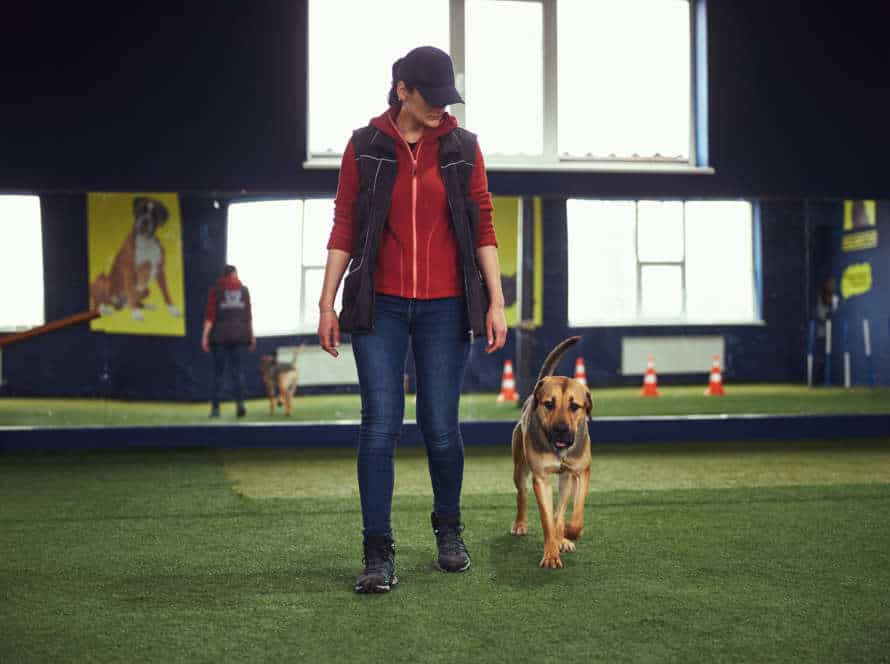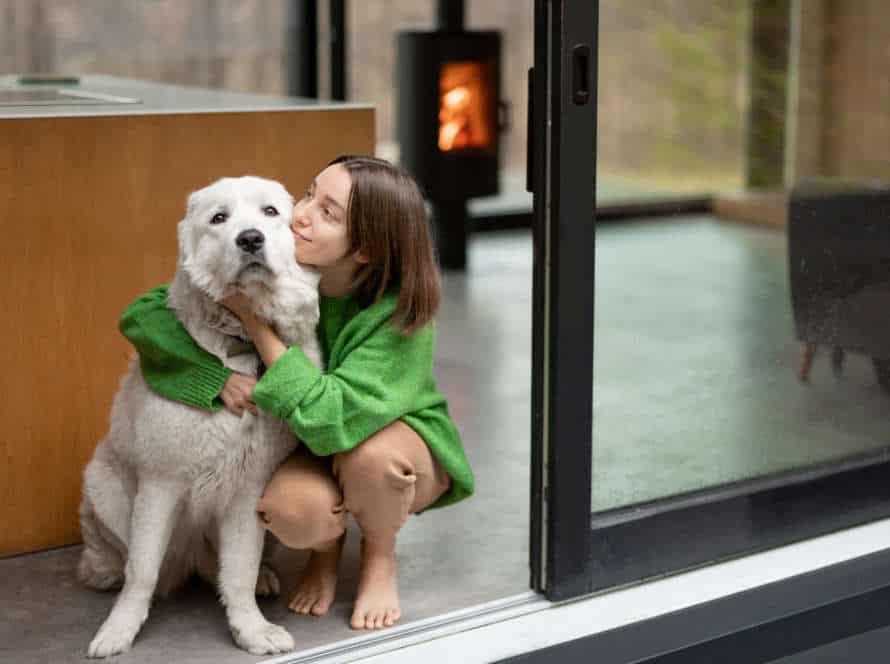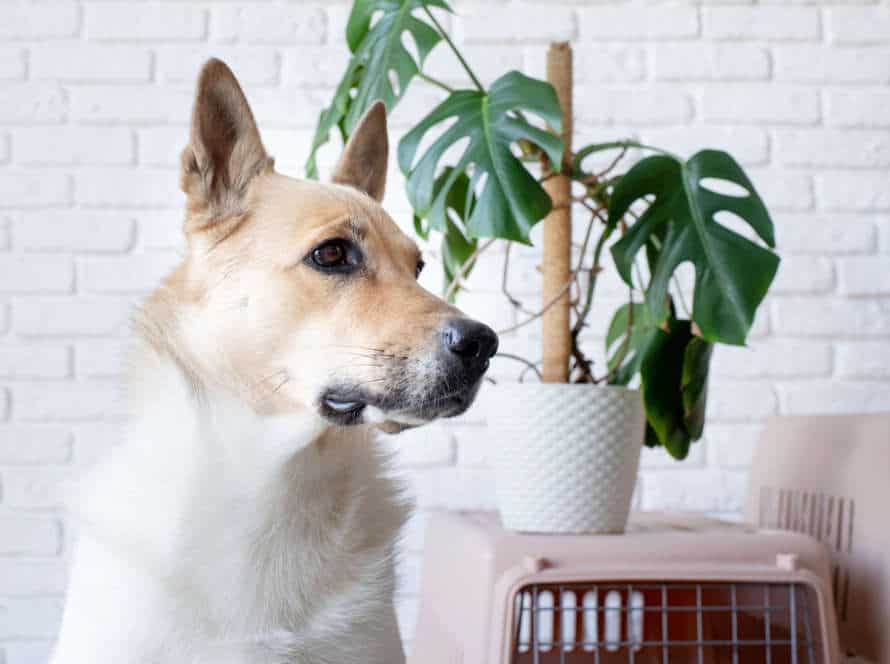Building a Strong Loose Leash Walking Habit for Life-Long Enjoyment
Loose leash walking is a great way to walk your pup without pulling on the leash. To build a life-long habit, you need to train your pup and provide positive reinforcement.
Here are some tips to help you:
- Choose the right equipment for your pup, like a harness to avoid strain or pain.
- Start teaching your pup off the leash and then introduce it slowly.
- Reward your pup with treats or praise when they walk without pulling. No rewards when they pull.
- Consistency is key. Practicing the habit regularly and with patience and positivity will help you form a long-term habit.
Building a strong loose leash walking habit may take time, but with proper effort, you can enjoy a pleasant walk with your pup.
Understanding Loose Leash Walking
Gaining insight into loose leash walking can help you create a solid loose leash walking habit and lifelong pleasure. Loose leash walking is a teaching ability that instructs your pup to walk close to you without tugging on the lead. Knowing the fundamentals of loose leash walking and the corresponding beliefs, such as body language and leash pressure, is important. To manage your dog’s behavior successfully, you must also know how to apply them.
What is Loose Leash Walking
Loose leash walking is a training technique that teaches pooches to walk calmly, without tugging on their leash. Here are the steps for setting a strong loose leash walking habit:
- Start training in a quiet area without distractions.
- Use a collar/harness and leash that are comfy and fit well.
- Hold the leash firmly, but loosely – giving enough slack for the dog to move.
- Reward and praise the pup for walking calmly. Treats or verbal cues work.
- Stop and change direction if they pull or become distracted. Then reward and praise for continuing at a calm pace.
- Practice in various environments and gradually increase distractions. With consistency, your pup will learn to love walking on a loose leash!
Why is Loose Leash Walking Important
Loose leash walking is a must for pet parents who want to foster a strong and pleasant walking routine with their furry pal. When dogs tug the leash, it can cause harm to their necks and is hazardous for the pup and owner. Teaching your pooch to walk on a loose leash can help prevent injuries and make for a peaceful outing together.
Follow these steps to help Fido master it:
- Give positive reinforcement like treats and compliments to reward good leash conduct.
- Begin training in a low-distraction setting, then gradually switch to busier places.
- Utilize a front-clip harness or head halter to lessen pulling.
- Exercise often to form a habit.
With tolerance and consistency, you can coach your pup to stroll contentedly by your side and have a tension-free walk together.
The Benefits of Loose Leash Walking
Loose leash walking is important for pet owners. It’s great for both the human and pup! Here are the perks:
- Safety: When your dog walks on a loose leash, they won’t pull or run towards dangerous things, like busy roads and other pooches.
- Bonding: Loose leash walking helps build trust and connection with you and your pup. Plus, it makes for a more enjoyable walk.
- Exercise: It’s a great way to get exercise, which is crucial for your pet’s health.
- Mental Stimulation: Letting them explore their environment while on the leash gives them some mental stimulation, making their routine more exciting.
To make sure your pup knows how to walk on the loose leash, use positive reinforcement and be consistent with training. This will make for a wonderful companionship and life-long friendship!
The Fundamentals of Loose Leash Walking
Loose leash walkin’ with your pup? A must-have skill! Guaranteed to make life-long strolls together super enjoyable. Let’s get goin’!
Learn the basics of how to teach your pup to walk on a loose leash. This section will give you an overview of the key concepts and principles needed for a successful leash walkin’ relationship with your pup!
Pre-requisites for Loose Leash Walking
Loose leash walking is a must for your pup! But, before you train your furry mate, there are certain prerequisites. Here they are:
- Patience and consistency are key. Be ready to practice often, and reward good behavior constantly.
- Get the right equipment. Buy a comfy harness, a solid leash, and yummy treats to motivate your pup during the training.
- Use positive reinforcement. Praise, treats, and playtime will help when your pup behaves well.
- Shorten sessions. Keep the training short and frequent to keep your pooch’s focus and enthusiasm.
If you do these steps, you can build a strong base to teach your dog loose leash walking, leading to a lifetime of fun walks together.
Teaching the Basic Commands – Sit, Stay and Come
Train your pup to leisurely stroll with you by teaching them the basics! Start with “sit”, “stay”, and “come”. Here’s how:
- “Sit”: Put your pup on a leash and hold a treat above their head. Gradually guide it towards their tail and say “sit” when their rear hits the ground. Reward and praise them for a job well done.
- “Stay”: Put your pup in a sitting position, say “stay” and take a step back. Reward and praise them for staying put. Increase the distance and duration gradually.
- “Come”: Walk away from them, call out their name with “come” and give them a treat/praise when they arrive. Increase the distance and distractions slowly.
Remember, practice makes perfect! Positive reinforcement is key. Treats and praise for good behavior. Avoid punishment-based techniques, it may damage trust and worsen behavior. Start with short walks and increase the length and difficulty gradually.
Using Positive Reinforcement Techniques for Loose Leash Walking
Positive reinforcement is a great way to teach your pup to walk on a loose leash. It focuses on rewarding good behavior, not punishing the bad. Here’s how to do it:
- Set clear boundaries and expectations.
- Give treats or praise when they stick close to you.
- Use a clicker or verbal cue to signal they’re doing right.
- Train often, but keep it short.
- If your pup pulls, pause until the tension releases.
With consistent training and reinforcement, your pup will love walking on a loose leash and form a life-long good walking habit.
Tips for Building a Strong Loose Leash Walking Habit
Loose leash walking: a great way to keep your pup safe and increase the bond between you and your dog. It also provides physical and mental stimulation. If you want tips to build a strong walking habit, then this article is for you. Techniques to help you build a strong loose leash walking habit, for life-long enjoyment: explore them!
Start with Short Leash Walks in Controlled Environments
For life-long enjoyment with your furry pal, forming a strong loose leash walking habit is essential. Here’s a few tips to begin:
- Start in an enclosed space, like a fenced yard or quiet park, with minimal distractions.
- Ensure safety and comfort with a correctly fitting leash and collar/harness.
- Keep the leash relaxed. Motivate your pup to walk with a treat or positive reinforcement.
- Walk at a slow and continual pace until your pup understands the desired behavior.
- Expand duration and introduce new areas as your pup’s skills develop.
Forming a strong loose leash walking habit requires patience and practice. With regular training and positive reinforcement, your furry friend can learn to walk cheerfully by your side.
Gradually Increase the Distance and Difficulty Level
Train your pup for strong loose leash walking with patience and consistency. Boost the difficulty and distance of the walk bit-by-bit to create a lasting habit. Here’s what to do:
- Start in a low-distraction area like your backyard or a quiet park.
- Use treats or clicker to reward great behavior.
- Increase the difficulty and distance as your dog relaxes.
- Stay positive and reward your pup with treats or compliments for good behavior.
Gradual progression will help your dog get used to the activity and make it more fun long-term.
Use Different Methods to Keep Your Dog Interested
Making sure your pup is interested during leash walks is important for creating a strong and long-lasting habit. Here are some tips:
- Switch up routes! Change the route often to offer new sights and smells. This keeps their senses alert and prevents boredom.
- Positive reinforcement works! Reward with treats and praise for good walking behavior. This will encourage them to keep it up.
- Incorporate training exercises: Use commands like stop-and-sit and heel at certain points.
- Allow sniffing breaks. Let them explore the environment with natural instinct.
By keeping your pup interested, you’re setting up a great loose leash walking habit. Pro tip: Be consistent and patient, and enjoy some quality time!
Addressing Challenges in Loose Leash Walking
Loose leash walking is a must-learn for dogs. Struggles may occur when trying to teach your pup – attention issues, lack of proper reinforcement and being inconsistent. To form a lasting, happy habit of leash walking, we must understand and tackle these difficulties.
Managing Distractions and Other Unfavorable Situations
Training your pup to walk with a loose leash can cause distractions and challenging situations. Here’s how to manage them:
- Be attentive. Look out for other dogs, people, cars, and noise.
- Keep a safe distance. Start far enough away from distractions.
- Reward the good behavior. Treats or praise help.
- Keep their focus on you. If they show interest in a distraction, redirect them with a cue or treat.
- Stay patient! Loose leash training takes time. Plus, use a harness instead of a collar to avoid choking and pulling.
Addressing Pulling, Lunging and Other Unwanted Behaviors
Creating a strong habit of loose-leash walking that your furry friend enjoys for life is vital. To help you with this, here are some tips:
- Make use of treats and verbal praise to teach your pup to walk without pulling.
- Use a no-pull harness or head collar to avoid lunging and pulling.
- Start leash walking in low-distraction places, then increase the distractions gradually.
- If your pup pulls or lunges, stop walking and stand still. Then, wait for her to relax and start again.
- Identify any health or behavior problems that might be causing the unwanted behaviors.
Patience, consistency, and positive reinforcement are essential for success. With time and effort, your companion will learn to love walking with you without pulling or lunging.
Tools and Aids for Loose Leash Walking
Loose leash walking can be tricky to teach and keep up with. But don’t worry! There are many tools and aids that make training easier and help your pup learn good habits for life.
Here are a few of the best:
- Front-clip harness: Redirects your doggo’s attention back to you when they try to walk away.
- Gentle leader head collar: Tightens around your pup’s nose and neck, guiding them back to you.
- Treats and clicker: Reward them for good behaviour and encourage them to repeat it.
- Leash and collar: Standard leash and collar can work if used correctly and your pup responds well.
Use these tools consistently, and your pup will learn to love loose leash walking!
Pro tip: Find what works for your pup’s personality and behaviour. And remember: always use positive reinforcement and be consistent.
Taking Your Loose Leash Walking to the Next Level
Teach your pup loose leash walking! It’s a great way to strengthen the bond between you and your dog. Plus, it can help keep them safe when out and about. To become a pro, you’ll need patience, consistency, and positive reinforcement. We’ll show you how to take your loose leash walking skills to the next level.
Advanced Exercises for Loose Leash Walking
Loose leash walking is a must for dogs and their owners. It allows for safe and pleasant walks, free of strain or pain. Take your leash walking to the next level with these exercises:
- Change up your pace. Teach your dog to focus on you, whatever speed.
- Change direction. Use turns or stops to get your dog to stay close and practice in different directions.
- Intermittent stops. Stop and stay put – your pup will come back and make eye contact before going on.
- Course work. Make an obstacle course that requires your pup to be near you and maneuver tight spaces.
- Controlled distractions. Loose leash walk in the presence of things like other dogs, people, or food to work on focus and control.
Remember, loose leash walking is forever. Patience and consistency will help strengthen your skills and improve your bond.
Maintaining Consistency for Successful Loose Leash Walking
For successful loose leash walking, consistency is key! Patience and practice are vital for forming lifelong habits. Here are some tips to help:
- Use treats, praise, or toys to motivate your pet.
- Establish a routine for walks, and keep the pace slow.
- Reward good behaviour and ignore bad behaviour.
- Shorter leads will give you more control.
- Set realistic goals and gradually increase the distance walked.
Consistency in training = strong habit + enjoyable experience for both you and your pet.
Encouraging Life-Long Enjoyment through Loose Leash Walking.
Loose Leash Walking is a skill all dog owners should teach their pup. It makes walking more enjoyable and helps dogs stay well-behaved. Here are some tips to take it up a notch:
- Use positive reinforcement.
- Teach your dog basics like ‘sit’, ‘stay’, and ‘come’.
- Practice in a controlled environment with little distractions.
- Reward with treats, verbal praise and extra attention.
- Make Loose Leash Walking a daily habit. With patience and dedication, you and your furry friend can build a strong bond and reliable Loose Leash Walking routine that will last!
Frequently Asked Questions
1. What is loose leash walking?
Loose leash walking is a technique or habit of teaching dogs to walk calmly and gently beside their owners without pulling, tugging or dragging the leash.
2. Why is loose leash walking important?
Building a strong loose leash walking habit is important as it leads to good behavior and obedience in dogs. It also makes walking with your dog enjoyable and reduces the risk of accidents or injuries.
3. What are some tips for loose leash walking?
Some tips for loose leash walking include using positive reinforcement, using treats and rewards, using a harness, and being consistent with training.
4. How long does it take to train for loose leash walking?
Training time for loose leash walking may vary depending on the dog breed, age, and previous experiences. Consistent training sessions and patience are key to building the habit.
5. What are some common mistakes made when training for loose leash walking?
Some common mistakes during loose leash walking training include using a wrong leash, using harsh punishment, inconsistent training, and not rewarding the dog for good behavior.
6. Can an older dog be trained for loose leash walking?
Yes, older dogs can be trained for loose leash walking. It may take longer for them to learn but consistent training and patience can help in building this habit.

